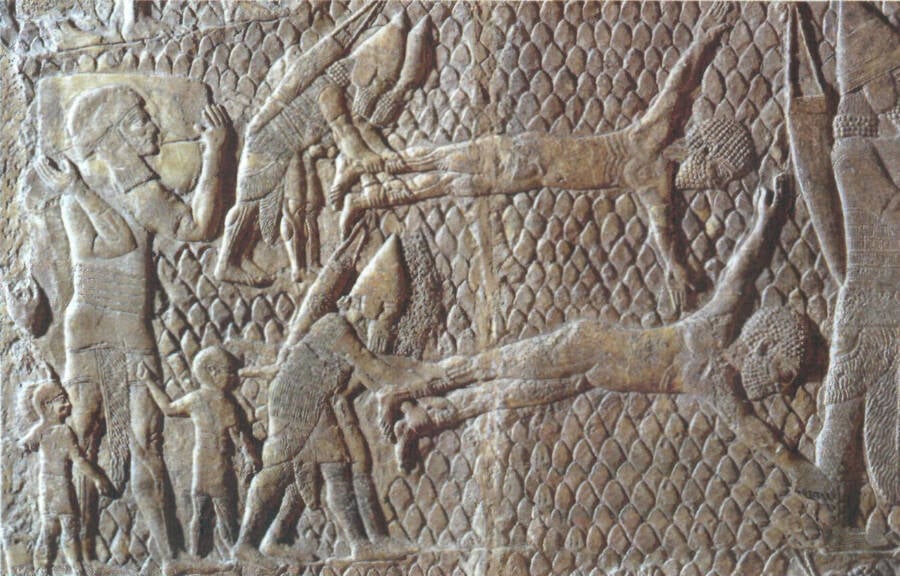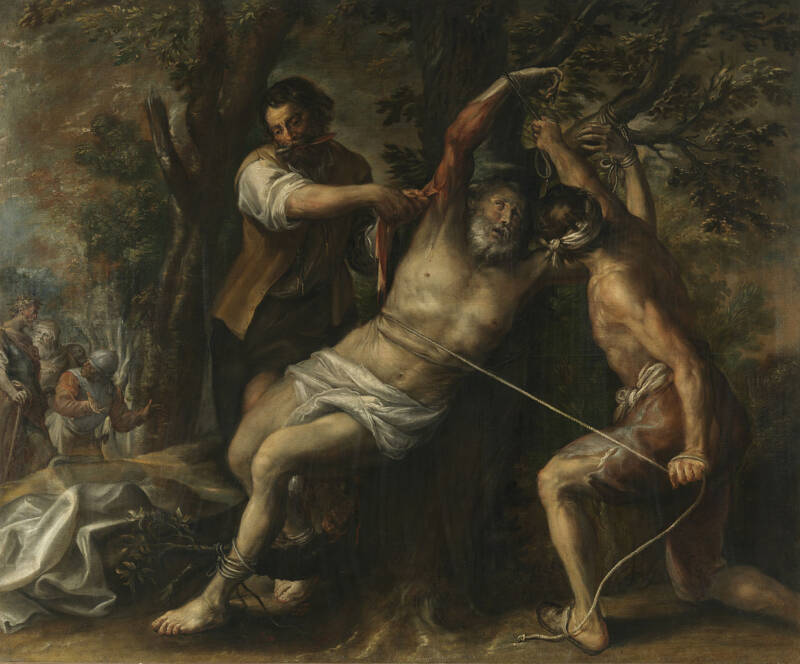The Gruesome History Of Flaying

Public DomainFlaying was a popular punishment among Assyrians, seen here skinning prisoners alive.
The next medieval torture device was rare in the Middle Ages. But when it was used, it was horrific, and it was part of what would be a gruesome execution. This was the practice of flaying, or skinning people alive.
In ancient Assyria (circa 800 B.C.E.), this torture method was used with some frequency. “I flayed as many nobles as had rebelled against me [and] draped their skins over the pile [of corpses],” one Assyrian king boasted, “some I spread out within the pile, some I erected on stakes upon the pile… I flayed many right through my land [and] draped their skins over the walls.”
Though the practice had largely died out by the dawn of the Middle Ages, it didn’t completely disappear. There are a handful of stomach-churning cases where flaying was used during the medieval era.

Public DomainThe flaying of Saint Bartholomew, one of the 12 apostles of Jesus Christ.
In one possibly apocryphal story, a man named Richard Pudlicote was flayed after he stole treasure from Westminster Abbey in 1303. He was certainly hanged in 1305, but one version of the story of his execution claims that his skin was also flayed from his body and affixed to the treasury door.
In 1571, a Venetian commander named Marcoantonio Bragadin was also flayed alive after he surrendered to the Ottoman Turks.
“He was flayed from head to toe and stuffed with straw in effigy. When his tomb was opened in 1961, they found his skin,” Dr. Larissa “Kat” Tracy explained in a Longwood University article in 2017.
But other examples of this torture method being used during the Middle Ages are, thankfully, harder to come by.





